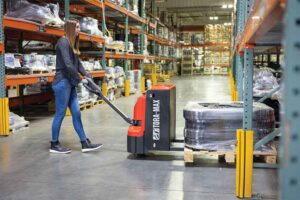Archive for January, 2024
Key OSHA Forklift Training Rules You Need to Know
In workplace safety, adherence to Occupational Safety and Health Administration (OSHA) standards is paramount to creating secure and healthy working conditions. Failure to comply with OSHA regulations can result in severe consequences and fines. Among OSHA’s crucial regulations are those governing forklift operations, emphasizing the importance of proper training to mitigate risks and maintain a secure work environment. This blog post provides a comprehensive overview of OSHA’s rules for forklift training, offering clarity to businesses seeking compliance.
Let’s dive into understanding OSHA’s Forklift Training Rules.
Age Requirement for Forklift Operators
OSHA mandates that individuals must be at least 18 to operate a forklift in non-agricultural operations. This age restriction is in place to ensure operators possess the maturity and responsibility necessary for safe forklift operation.
Driver’s License Requirement for Forklift Drivers
Unlike driving a car, according to OSHA requirements, forklift operators do not need a valid state driver’s license. The focus is on specialized training and certification tailored to the specific forklift used in the workplace.
Training Frequency for Forklift Operators
OSHA requires additional training in the event of a poor evaluation, changes to the work environment, or a transition to a different type of forklift. This flexibility allows businesses to tailor training schedules to their specific needs.
Recertification Interval for Forklift Drivers
OSHA requires the evaluation of every forklift operator at least once every three years to ensure that operators remain proficient in their skills and are aware of any updates or changes in safety protocols.
New Lift Trucks and Recertification
Operators do not require recertification when transitioning to a newer model of the same type of forklift. However, introducing an entirely new type of forklift necessitates thorough training before operation, ensuring operators can handle the specific characteristics of the new equipment.
Hand Pallet Jacks Certification 
OSHA categorizes small hand pallet jacks as industrial trucks, underscoring the need for certification. Despite their compact size, Hand Pallet Jacks can cause harm if not operated correctly.
Golf Cart Operation
OSHA does not regulate golf carts. However, maintaining a safe workplace involves providing training for employees operating golf carts, emphasizing adherence to manufacturer guidelines for safe usage.
Forklift Operator Safety Training Programs
Companies are encouraged to invest in comprehensive forklift operator safety training programs. Training should cover theoretical knowledge and practical skills, ensuring operators are well-prepared for real-world scenarios.
Get Forklift Certification in LA County
We have a comprehensive operator safety training program with classroom and hands-on instruction. Using this program, our professional trainers provide your employees with the latest OSHA regulations, plus classroom and hands-on instruction on proper lift truck operation.
We provide training at our location on the 1st and 3rd Friday of every month at 8 am. We also offer Train the Trainer courses, refresher courses, and group classes at your location. We’re happy to use your equipment in your warehouse for the best results. Click here to book operator safety classes today!
Maintaining OSHA compliance is essential for safeguarding employees and the overall success of your business. Regularly check OSHA’s website for the latest rules and regulations. If you have any questions, contact us to schedule a free safety inspection to ensure a safe and compliant workplace.
How to Manage Spare Forklift Parts
Effective forklift maintenance is indispensable for any business relying on material handling equipment. The key to reducing downtime and ensuring smooth operations is strategically managing critical spare parts within your facility. This blog post explores the importance of keeping essential forklift components on-site, enabling businesses to address issues, minimize disruptions, and enhance efficiency.
The Cost of Downtime
Unplanned downtime can be a significant financial burden for businesses, affecting productivity, customer satisfaction, and the bottom line. When a forklift malfunctions, every minute counts, and delays in sourcing replacement parts can escalate costs and disrupt workflow.
Identifying Critical Forklift Parts
- Frequent Replacements: Identify the parts you replace most frequently during routine maintenance. Make sure to include components that undergo regular wear and tear in the course of daily operations.
- Urgency of Replacement: Evaluate how often you need specific parts. Critical parts are those whose immediate availability is essential to avoid prolonged downtime.
- Business Impact: Consider the broader impact on your business if a particular part is unavailable. If the absence of a specific component significantly hampers operations, it qualifies as a critical part.
Benefits of On-Site Spare Parts
- Swift Response: Keeping critical spare parts on-site allows for immediate response to forklift issues. Technicians can quickly access the necessary components, reducing the time needed to get the equipment back in operation.
- Cost Efficiency: By maintaining an inventory of essential parts, businesses can avoid costly overnight shipping charges and emergency procurement expenses. Having parts readily available minimizes the financial impact of unexpected breakdowns.
- Continuous Operations: With on-site spare parts, businesses can maintain continuous operations even when facing forklift malfunctions. The ability to fix a forklift ensures a seamless workflow, preventing disruptions in supply chains and meeting customer expectations.
Developing a Spare Parts Strategy
- Regular Audits: Conduct regular audits of your forklift fleet and update the list of critical spare parts based on usage patterns and equipment specifics.
- Strategic Inventory Management: Implement a robust inventory management system to track the availability and condition of spare parts to help replenish stock proactively.
- Collaboration with Suppliers: Establish relationships with reliable suppliers, like Toyota Material Handling Solutions, to ensure a steady and timely supply of critical parts when needed.
Proactively managing critical spare parts on-site is fundamental to effective forklift maintenance. By investing in a strategic spare parts strategy, businesses can minimize downtime, optimize operational efficiency, and ultimately contribute to a more resilient and profitable operation. Prioritize preparedness today to secure tomorrow’s uninterrupted flow of your material handling processes.
